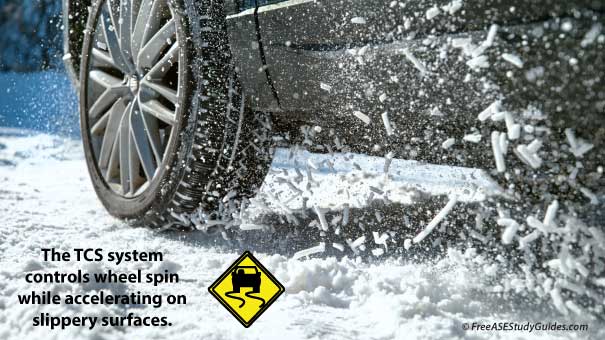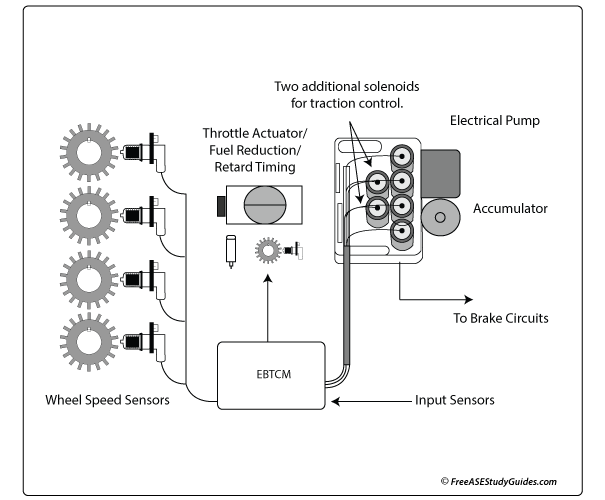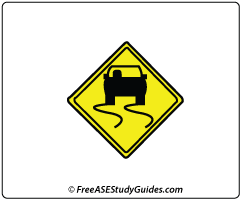TCS Traction Control System

The TCS traction control system controls wheel spin and loss of traction during hard and sudden acceleration by reducing engine speed or applying individual brake units.
The ESP electronic stability program uses the ABS and TCS to control and restore traction and stability. Today's ABS systems contain four-wheel speed sensors. ESP and TCS traction control systems also require a wheel speed sensor to monitor each wheel's speed.

The TCS program requires additional solenoids in the modulator to isolate the brake circuits to the drive wheels. Hydraulic pressure from an electric pump and accumulator applies the brake on the wheel that lost its traction. If a tire breaks loose and loses traction, the pressurized fluid quickly pulses the brakes on the spinning wheel. This process happens before the driver realizes the wheel is about to slip.

Many systems use an electronic throttle body to reduce power at speeds above 30 mph by decreasing the throttle angle. Retarding the ignition timing and decreasing fuel injector pulse width are other methods to reduce engine speed. In addition, traction control inhibits the overheating of the brake system.
TCS Indicator Light

The traction control system reacts so fast that the driver is often unaware the wheel is beginning to slip, and the vehicle is about to lose traction. The system includes an indicator light that flashes while the system is active. This flashing light is normal. Inspect and scan the system for codes if the ABS and traction control light illuminate continuously. Many TCS systems have a deactivation switch to deactivate the system if the vehicle's stuck in mud or deep snow.